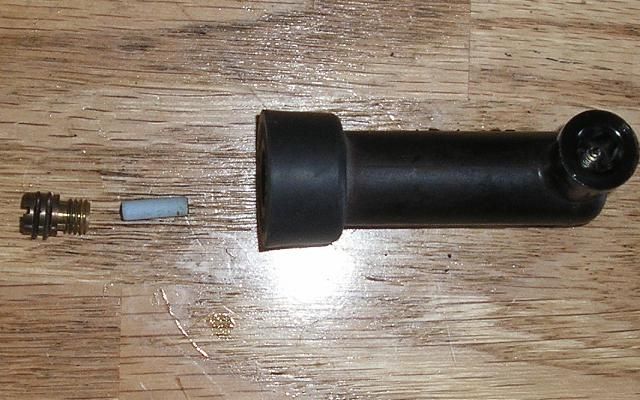I am putting the "electrical-system-in-a-bag" back onto my project SF.
The PO said he could not get a spark and threw an hand grenade in the fuse box, then starting removing all the electrical parts in the system. Don't know what he was thinking (or not).
As I am putting everything back together, I am trying to test as much as I can, to find a reason why the PO had no spark.
I measured the resistance of the ignition coils, and found the primaries were both normal (1.4-1.6 Ohms). I found the secondaries were 36kOhm and 26kOhm through the plug resistors. I found the reason one was high was that the plug resistors were 8k and 12k instead of 5k. Hmmm..should still work, but a thought for future investigation.
Just be sure, I wanted to test the spark. I put the spark plugs for each coil in a bench vice to complete the secondary circuit and avoid frying the insulation on the secondary winding. Then I manually tapped 12V onto the primaries with a 10A/12V power supply. There is no spark using either coil.
I tried some known good plugs. No spark.
Shouldn't this test show a spark? If yes, then maybe the PO already ruined the insulation on the secondaries?
Your thoughts are appreciated.
The PO said he could not get a spark and threw an hand grenade in the fuse box, then starting removing all the electrical parts in the system. Don't know what he was thinking (or not).
As I am putting everything back together, I am trying to test as much as I can, to find a reason why the PO had no spark.
I measured the resistance of the ignition coils, and found the primaries were both normal (1.4-1.6 Ohms). I found the secondaries were 36kOhm and 26kOhm through the plug resistors. I found the reason one was high was that the plug resistors were 8k and 12k instead of 5k. Hmmm..should still work, but a thought for future investigation.
Just be sure, I wanted to test the spark. I put the spark plugs for each coil in a bench vice to complete the secondary circuit and avoid frying the insulation on the secondary winding. Then I manually tapped 12V onto the primaries with a 10A/12V power supply. There is no spark using either coil.
I tried some known good plugs. No spark.

Shouldn't this test show a spark? If yes, then maybe the PO already ruined the insulation on the secondaries?
Your thoughts are appreciated.



Comment